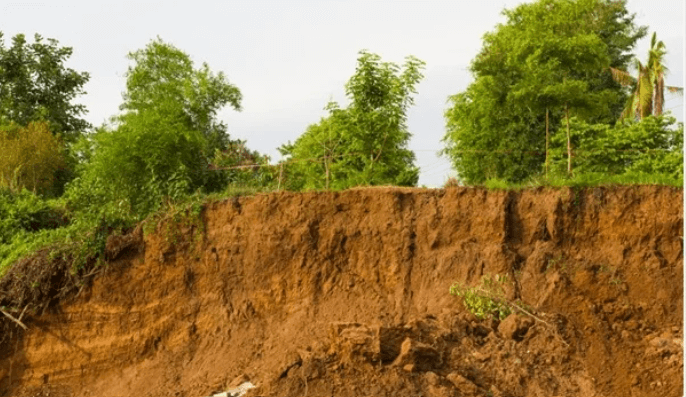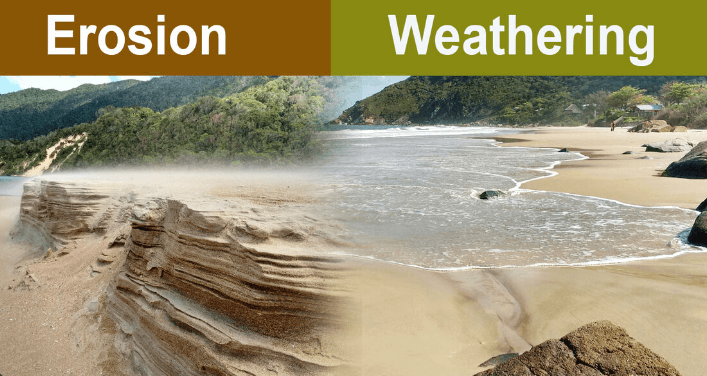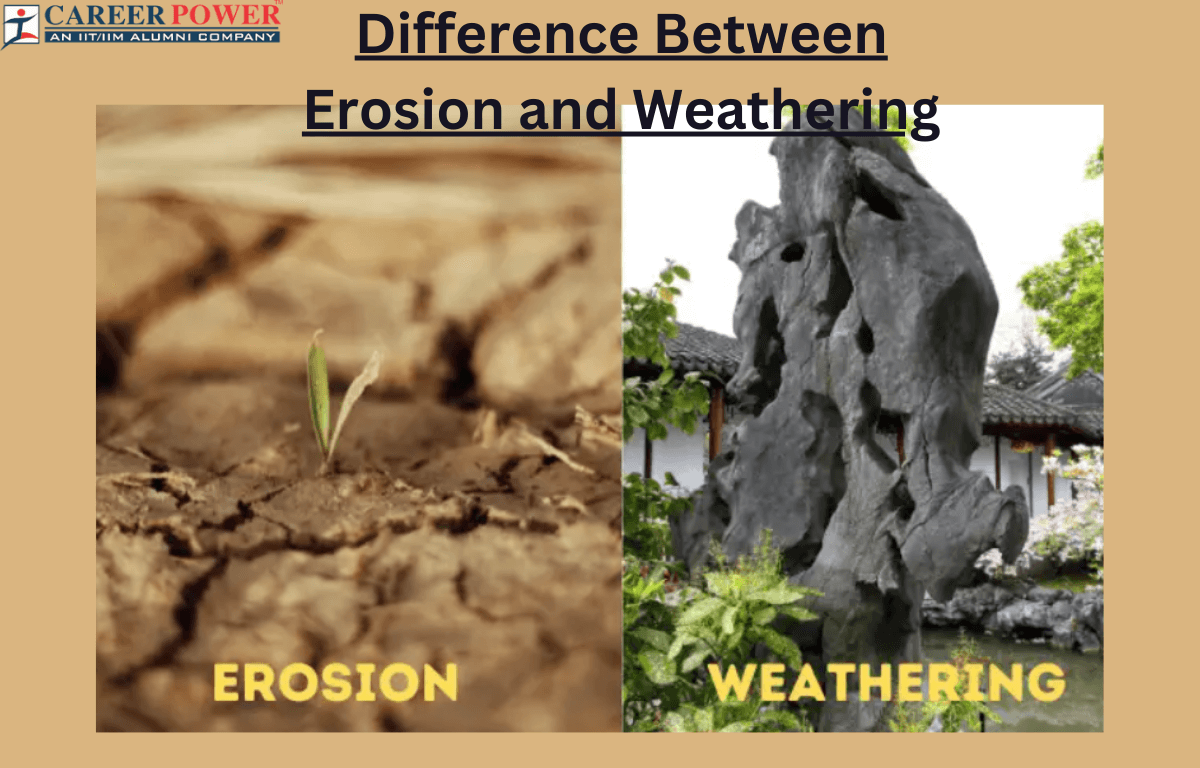Both erosion and weathering are related processes, but they differ in their actions on Earth’s surface. Weathering refers to the breaking down of rocks into smaller particles due to natural elements like water, wind, and temperature changes. Erosion, on the other hand, involves the movement and transport of these weathered particles by agents like water, wind, or ice. In essence, weathering is about breaking down, while erosion is about carrying away. We have discussed a few differences and similarities between Erosion and Weathering below in the article.
Erosion and Weathering
Erosion and weathering are natural processes that shape the Earth’s surface over time. Weathering refers to the process of breaking down rock, soil, and minerals through contact with the Earth’s atmosphere, water, and biological organisms, while erosion, on the other hand, is the process of transporting the weathered particles away from their original location. Both erosion and weathering play a significant role in the formation of landforms such as mountains, valleys, and beaches, as well as in the creation of fertile soil for plant growth.
Define Erosion
Erosion is the natural process by which soil and rock are removed from the Earth’s surface by the action of wind, water, ice, or biological activity. There are many types of erosion one of them is Soil Erosion. It is a geological process that wears away the surface of the earth, often resulting in the formation of sediment and the reshaping of landscapes over time. In other words, Erosion occurs when the Earth’s surface is worn away by natural forces. These forces include wind, water (such as rivers and oceans), ice, and even living organisms.

Erosion can happen gradually over long periods or suddenly due to events like storms or volcanic eruptions. It plays a significant role in shaping the Earth’s surface, creating features like valleys, canons, and deltas, and also plays a key role in the formation of soil. Erosion can have both positive and negative impacts on the environment, affecting natural habits, agriculture, and human settlements. Various factors, such as the type of soil, climate, and human activities, influence the rate and intensity of erosion processes.
Define Weathering
Weathering refers to the process by which rocks, minerals, wood, and other materials are broken down or dissolved over time due to various physical, chemical, and biological factors. These factors can include temperature changes, water, wind, and the actions of organisms. Weathering is a key geological process that plays a fundamental role in shaping the Earth’s surface over millions of years. In simple terms, weathering is the natural process that breaks down rocks and other materials into smaller pieces over time. It happens because of things like rain, wind, and temperature changes, and it helps shape the Earth’s surface.

Difference Between Erosion and Weathering
Erosion and weathering are related geological processes, but they are distinct in their mechanisms and effects. Weathering is the breakdown of rocks into smaller particles, while erosion is the transportation of these weathered materials to a different location. Weathering prepares the material for erosion, and erosion transports the weathered material to new places, shaping the Earth’s surface over millions of years.

| Difference Between Erosion and Weathering | ||
| Aspects | Erosion | Weathering |
| Definition | Erosion involves the removal and transport of weathered material from one place to another. | Weathering refers to the breakdown of rocks and minerals in situ. |
| Process Type | Natural agents like water, wind, ice, and gravity are responsible for erosion. | Physical and chemical processes contribute to weathering. |
| Location | Erosion involves the movement of weathered material from its original location. | Weathering occurs in the place, where the rocks are situated. |
| End Result | Erosion leads to the transportation of weathered material to different locations. | Weathering results in the disintegration and decomposition of rocks into smaller particles. |
| Agent | Agents of erosion include rivers, streams, glaciers, wind, and gravity. | Agents of weathering include water, wind, temperature changes, and biological activity. |
| Effect | Erosion shapes landscapes by moving weathered material and forming landforms. | Weathering prepares rocks for erosion by breaking them down. |
| Time Scale | Erosion can rapidly in certain conditions, but still generally takes a considerable amount of time. | Weathering is a gradual, long-term process. |
| Movement Type | Erosion involves the transportation and deposition of material. | Weathering does not involve the movement of material. |
| Resulting Landforms | Erosion creates landforms like valleys, canyons, and beaches. | Weathering contributes to the formation of soil and sediment. |
| Surface Impact | Erosion alters the landscape, wearing down surfaces and reshaping the terrain. | Weathering affects the surface of rocks, causing changes in appearance and composition. |
Similarities Between Erosion and Weathering
Erosion and weathering are both natural processes that affect the Earth’s surface, but they have distinct differences. However, they do share some similarities. While erosion involves the movement of particles, weathering is more about the breakdown of rocks into these particles.
- Natural Processes: Both erosion and weathering are natural processes that occur over time due to various environmental factors.
- Breakdown of Material: Both processes involve the breakdown of rocks and other Earth materials. Weathering is the initial process where rocks are broken down into smaller particles, and erosion is the transportation of these particles to a different location.
- Environmental Impact: Both erosion and weathering can significantly impact the landscape, leading to the formation of valleys, canyons, and other geological features.
- Influence of Water: Water plays a significant role in both processes. Weathering can occur due to water seeping into cracks in rock to break. Water erosion, such as river erosion, can transport weathered particles downstream.
- Geological changes: Both processes contribute to shaping the Earth’s surface over long periods, leading to geological changes and the formation of new landforms.



 50 Vegetables Name for Kids in English a...
50 Vegetables Name for Kids in English a...
 Food Chain: Definition, Types, Examples,...
Food Chain: Definition, Types, Examples,...
 Human Respiratory System: Definition, Di...
Human Respiratory System: Definition, Di...













